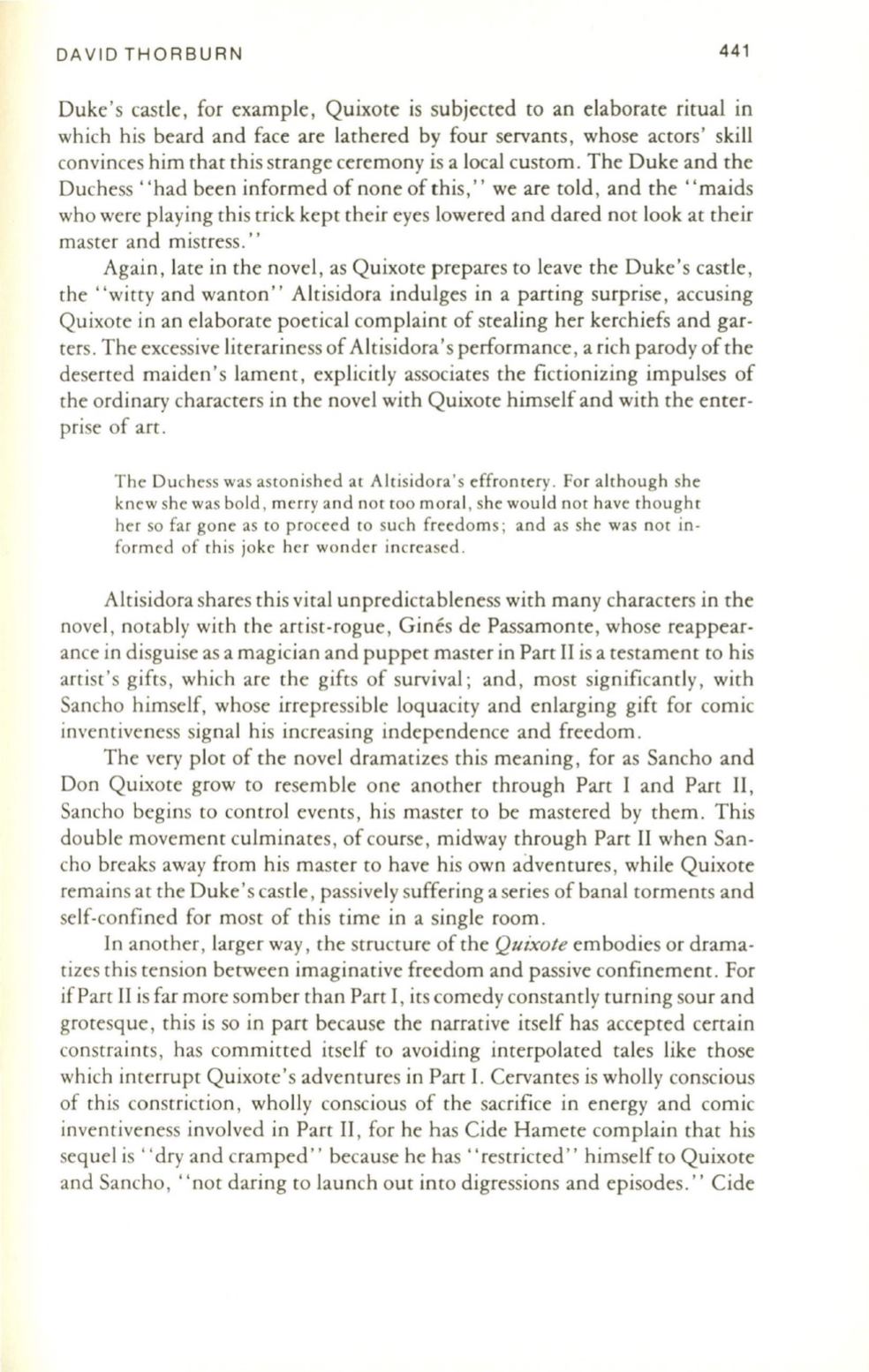
DAVID THORBURN
441
Duke's castle, for example, Quixote is subjected to an elaborate ritual in
which his beard and face are lathered by four servants, whose actors' skill
convinces him that this strange ceremony is a local custom . The Duke and the
Duchess " had been informed of none of this ," we are told, and the "maids
who were playing this trick kept their eyes lowered and dared not look at their
master and mistress."
Again, late in the novel , as Quixote prepares to leave the Duke's castle,
the "witty and wanton" Altisidora indulges in a parting surprise, accusing
Quixote in an elaborate poetical complaint of stealing her kerchiefs and gar–
ters. The excessive literariness of Altisidora' s performance , a rich parody of the
deserted maiden's lament , explicitly associates the fictionizing impulses of
the ordinary characters in the novel with Quixote himself and with the enter–
prise of art.
The Duchess was astonished at Altisidora's effrontery. For although she
knew she was bold, merry and not too moral, she would not have thought
her so far gone as to proceed to such freedoms; and as she was not in ·
formed of this joke her wonder increased.
Altisidora shares this vital unpredictableness with many characters in the
novel, notably with the artist-rogue, Gines de Passamonte, whose reappear–
ance in disguise as a magician and puppet master in Part II is a testament to his
artist 's gifts, which are the gifts of survival; and, most significantly, with
Sancho himself, whose irrepressible loquacity and enlarging gift for comic
inventiveness signal his increasing independence and freedom .
The very plot of the novel dramatizes this meaning , for as Sancho and
Don Quixote grow to resemble one another through Part I and Part
II,
Sancho begins to control events, his master to be mastered by them . This
double movement culminates, of course, midway through Part II when San–
cho breaks away from his master to have his own adventures, while Quixote
remains at the Duke 's castle, passively suffering a series of banal torments and
self-confined for most of this time in a single room.
In another, larger way, the structure of the
Quixote
embodies or drama–
tizes this tension between imaginative freedom and passive confinement. For
if Part II is far more somber than Part
I ,
its comedy constantly turning sour and
grotesque , this is so in part because the narrative itself has accepted certain
constraints, has committed itself to avoiding interpolated tales like those
which interrupt Quixote's adventures in Part
I.
Cervantes is wholly conscious
of this constriction, wholly conscious of the sacrifice in energy and comic
inventiveness involved in Part
II ,
for he has Cide Hamete complain that his
sequel is " dry and cramped" because he has "restricted" himself to Quixote
and Sancho, "not daring to launch out into digressions and episodes." Cide


